
33 minute read
SOLUTIONS SHOWCASE
SOLUTIONS SHOWCASE AXIS COMMUNICATIONS
IP Security Solutions Aren’t Just for the “Big Stores”
Not all video surveillance systems are created equal. As the demand for IP surveillance networks has increased among all types of organizations, retailers have a number of options to choose from. What they choose depends on the environment and level of complexity, as well as the overall security and business objectives at hand.
It can be overwhelming to find solutions, especially for smaller applications. Retailers with small locations need a solution that is easy and simple. That is why it is important to maintain the quick “plug-and-play” functionality associated with traditional analog surveillance systems, commonly used in small and medium-sized businesses, restaurants, retail, and hospitality.
Video Surveillance Just Became Simpler
Together, Axis Communications and Buffalo Technology offer a solution to this problem—a video surveillance system for small installations of up to sixteen cameras. The validated turnkey solution is easy to install and offers cost-effective redundant managed storage for your video.
The solution provides benefits far beyond surveillance, with business intelligence options and a lower total cost of ownership over the lifetime of the system. Business intelligence and analytics makes all the difference when it comes to effective loss prevention. Buffalo and Axis have partnered to provide consumers and retail businesses with versatile IP surveillance networks that can be effortlessly set up and maintained over long periods. Surveillance is what’s important to us, so you can focus on what’s important to you.
The Full Turnkey Solution
This system includes a Buffalo TeraStation 5200s NAS (network-attached storage), up to sixteen Axis cameras, free AXIS Camera Companion software, and a Buffalo network switch. It is optimized to deliver video surveillance for functionality with a wide variety of features and capabilities. Network—Simply utilize your existing network infrastructure with the Buffalo PoE enabled switch of your choice. Cameras—This system is designed to offer scalable surveillance of up to sixteen Axis network cameras.
Start with just a few cameras at a particular store location and scale up at any time, without any extra fees or hardware. Video Recording and Storage—The Buffalo
TeraStation 5200s NAS provides easily deployed redundant storage for enhanced reliability. It has dedicated support for surveillance NAS units preconfigured with Axis products. Software—The AXIS Camera Companion software was created with a focus on ease of use for any operator. It has an intuitive interface that allows you to search for live and recorded video with clear HDTV image quality.
Once the software is installed, you can record and playback video from any attached Axis network camera at any time, from anywhere. You can do so by using the mobile viewing app available for download from iOS and Android app stores. Support and Protection—Both Axis and Buffalo offer technical support via phone or chat. Axis provides warranty options ranging from one to five years with the extended warranty coverage option. Buffalo’s warranty option includes a standard three-year hardware warranty with free lifetime technical support.
Learn more about the simplicity of the Axis and Buffalo solution for your small surveillance applications. Give the Axis team a call at 800-444-2947 option 1 or visit online at axis.com or buffalotech.com.

SOLUTIONS SHOWCASE INTELLIGENT LOSS PREVENTION
Research Shows the Turtle Is Effective at Preventing Theft of High-Loss Products
The Turtle is a multi-functional EAS tag device that is used to secure packaged goods or display products. The Turtle emits a pre-alarm upon slight lifting or sliding. A full alarm sounds if the Turtle is removed from the product or if it passes through an EAS gate. The Turtle can be used independently by attaching its adhesive backing to any packaged good. It can also be attached directly to strapped packaging. Or it can be used with accessories to protect display merchandise. Accessories include a variety of cables with loop, sensor, or USB attachments that connect the Turtle to a display product. The Turtle is available in RF or AM versions.
Retail product theft and its impact on a shopper’s safety and shopping experience are critical issues associated with numerous high-loss products. Retailers want to do their best at deterring theft while simultaneously not harming the customer experience within the store. The Loss Prevention Research Council (LPRC) conducted a series of in-person survey interviews in the Gainesville, Florida, store of a major big-box retailer in order to understand the impact of the Turtle on associates, shoppers, and shoplifters. This research focused on the Turtle’s impact on protecting DEWALT power drills, one of the big-box retailer’s high-loss products. Below are the general findings of the research.
Customers
97 percent of customers stated that the presence of the Turtle did not have a negative impact on their shopping experience. Four out of five customers surveyed said that the presence of the
Turtle on the drills did not concern them. Over one-quarter of the interviewed customers didn’t even see that the turtle was there. 90 percent of the customers believe the Turtle is effective at preventing theft.
Associates
100 percent of interviewed associates agreed that the Turtle is effective in deterring theft. Results indicate 100 percent of associates interviewed about the
Turtle strongly agree that it is not disruptive to their daily duties. 87 percent of associates feel more aware of high-risk items protected by the Turtle.
Offenders
85 percent of the offenders said they would not steal the product if it was protected by the Turtle. 38 percent of offenders interviewed about the Turtle said they would go to another store that didn’t have this measure. Over 90 percent of shoplifters noticed the Turtle and all of them understood the purpose of the Turtle.
The Turtle was proven to reduce theft of high-loss products. Offenders’ reaction to the Turtle was that they could see it, they understood what it was, and it deterred them from stealing the item. Visit IntelligentLossPrevention.com to download the full white paper and get more information on other innovative loss prevention solutions.
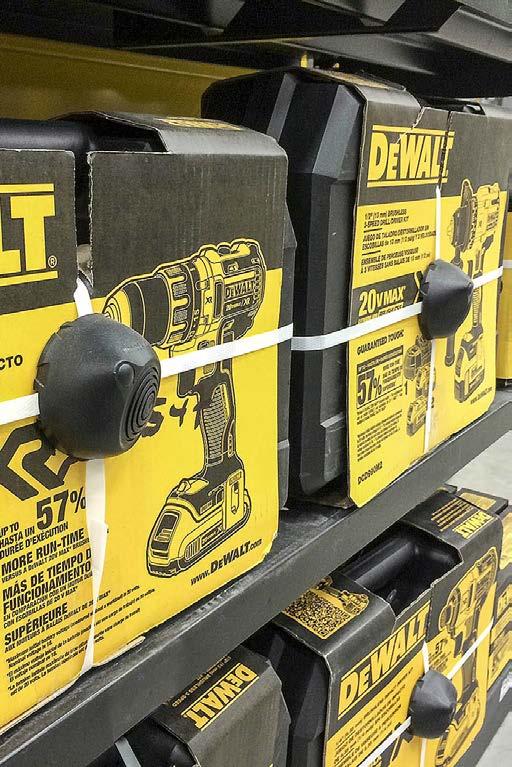
SOLUTIONS SHOWCASE DIGILOCK
Providing a State-of-the-Art Secure Personal Storage Solution for Retail
Digilock® is a global leader in delivering high-performance electronic locks and locker-security solutions that use patented technology on either a keypad or an RFID interface. Digilock’s ADA-compliant locks are offered in several architectural finishes, locking interfaces, functionalities, and security platforms and seamlessly integrate to any personal storage fixture and case good while their lockers deliver design, durability, and security through the comprehensive selection of door types, frame features, and storage configurations, always secured with locks by Digilock. Its commitment to providing superior customer support and responsiveness to market demands enables Digilock to be recognized as the industry influencer.
Every aspect of environment and operation impacts the experience that a retail facility provides. With a precision focus on style, ease-of-use, and lock management, Digilock enhances this experience with sleek and stylish security solutions.
How to Expand without Compromising Security
Digilock’s goal is to make security simplified® , blending science with the artistry that transforms the user experience. Digilock is seen in nearly all high-end locker rooms around the world, offering security and elegance that customers demand. The company also customizes products to fit a wide variety of applications across a multitude of diverse industries. Following is a case study that proves how the industry leader and the original manufacturer of electronic locker locks establishes the highest standards for unparalleled security solutions for locker rooms and personal storage areas.
La Maison Simons: Creativity, Architecture, Art
La Maison Simons is a popular Canadian fashion and home décor retailer that uniquely pairs its private-label fashion with higher-priced designers. After 175 years, La Maison Simons (simons.ca) is making a major aggressive expansion push in at least eight Canadian cities in the next four years.
“We had a vision of what we wanted to accomplish and be able to do in terms of design and innovation in retail, and I felt that we had to enlarge,” CEO Peter Simons said in a phone interview to The Canadian Press. Its new West Edmonton Mall store earned the Retail Store of the Year award from Chain Store Age for its innovative design, bright colors, and avant-garde fitting rooms that feature social-media-connected screens and a lighting installation that evokes the Northern Lights.
Recently, La Maison Simons opened its tenth location—an 80,000-square-foot store at Les Promenades Gatineau. CEO Peter Simons realizes that “it’s definitely a very competitive, dynamic market, with a new equilibrium forming between electronic sales and bricks-and-mortar.” To stand out from the crowd, he put a strong emphasis on creating unique experiences both for customers and for employees. As in all new La Maison Simons stores, in the effort to enrich the community and to support the artists, it features a one-of-a-kind art installation. “We’re trying to create a unique proposition that fits in, that offers something different. We’re going to do it through our store environments and also through social and interpersonal experience,” said Simons in an interview with The Montreal Gazette.
When the company is so focused on art and style and is so open to innovation, it comes as no surprise that its management strives to be consistent and wants to invest in improving its store appearance

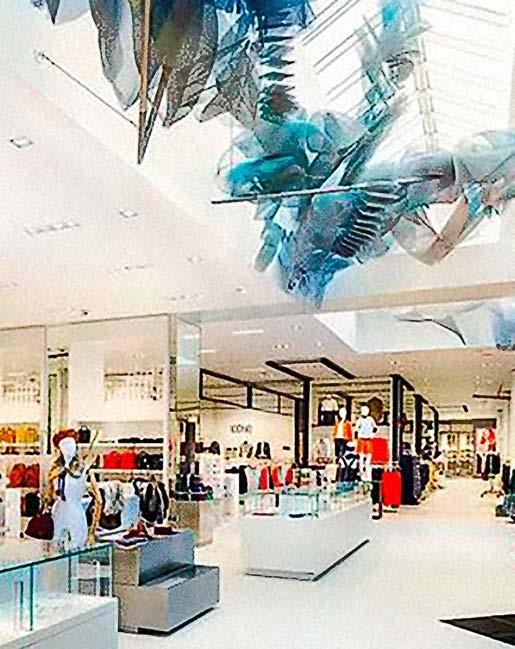
Photo: Simons, via Twitter Julie Tremlay’s Morphodynamique art installation in the women’s accessories department.
SOLUTIONS SHOWCASE DIGILOCK
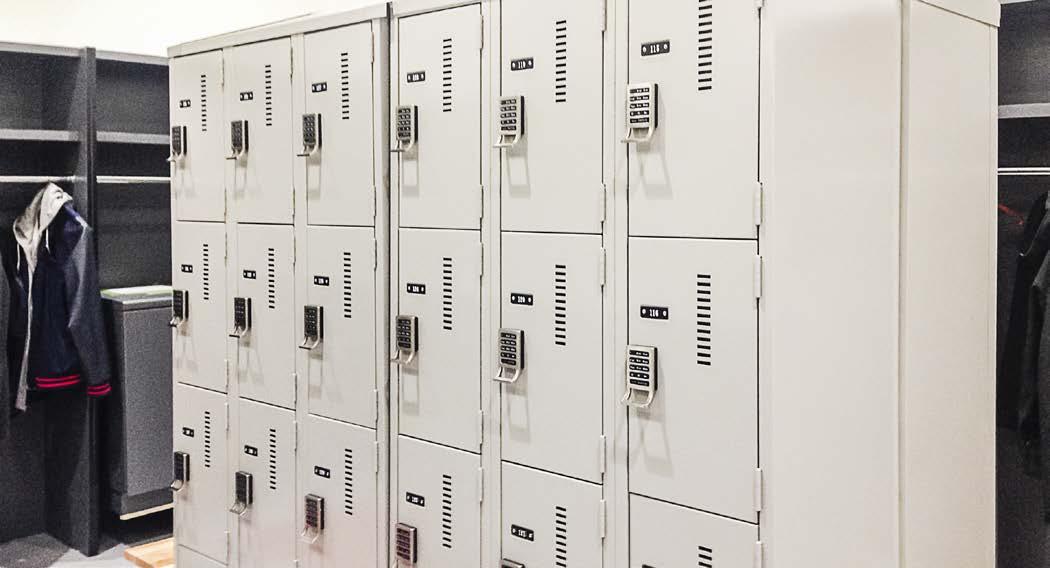
Installation of Digilock in the employee locker room.
Photo: courtesy of La Maison Simons store management.
and functionality not only in the front but also in the back, in the store employee area.
The company has over 2,000 employees, and the issue of securing their personal items and belongings was solved easily with the installation of Digilock electronic locks—a perfect shared-use keyless security solution, operated with the input of a user-selected four-digit code. The retail store provides a readily accessible solution for its employees when they are able to secure their lockers for the duration of their shifts. After the locker has been opened and vacated by the previous employee, it becomes available for the next employee. In case of emergency, management simply uses a patented electronic “manager key” to easily access the locker with a single touch. This complete innovative line of keyless security solutions saves both money and time and requires minimal maintenance while contributing to loss prevention efforts with the auditable feature.
Robert Pretto, security and LP director at La Maison Simons, has chosen Digilock since 2012 to supply digital locks for all Simons stores’ employee locker rooms. Simons has been using the Digilock products for several years now and appreciates the value and the quality that Digilock provides. The main benefits of the product are its simplicity and proven reliability. Store management said, “We are happy with this effective solution for managing lockers and will continue to use the product in our new stores.”
The company is proud of its superior customer service and is inclined to invest into enhancing user experience. In two years, all employees will have iPads to access information about products and to instantly deliver answers to customer’s inquiries. “Local shoppers unfamiliar with Simons can expect a family feel across the chain,” said Robert Mackalski, a brand expert and faculty lecturer at McGill University.
Retail analyst Randy Harris of Trendex believes Simons’ gradual expansion will make it a “national powerhouse” in the Canadian apparel market. “We’re trying to hold on to this belief in creativity and architecture and art,” Simons pointed out in his interview with Carol Toller from Canadian Business magazine. With such a thorough approach to style, art, customer service, and sophisticated loss prevention solutions, no doubt this retailer is going to win the hearts of consumers.
Why Digilock?
Founded in 1981 and headquartered in California with sales offices in the Netherlands and Hong Kong, Digilock continues to innovate since it delivered the first electronic lock for personal storage in 1992. Combining security with simplicity, locks by Digilock operate with a patented electronic manager key for a credible management system that significantly enhances productivity and reduces cost. Delivered fully assembled and ready to use, lockers by Digilock provide a turn-key personal storage system. To this day, Digilock remains the number one preferred manufacturer of high-performance security simplified® solutions for all industries.
SOLUTIONS SHOWCASE INDUSTRIAL SECURITY SOLUTIONS
Custom-Engineered EAS Solutions to Meet Any Need
Industrial Security Solutions (ISS) specializes in providing a complete range of EAS and CCTV products and services focused on the most beneficial and cost-effective solution catered to the size of the retailer. By manufacturing tags and systems in both AM and RF frequencies, ISS is able to offer competitive pricing on the most specific of solutions. Customers may even choose from an impressive range of refurbished products. With partnership as a keystone in the ISS business philosophy and the ability to install and service in all fifty states, no retailer is left behind.
The ISS Difference
Industrial Security Solutions understands that with the evolving retail industry the importance of maximizing profits for brick-and-mortars is at its highest. Unfortunately, these profits are lost daily to internal and external theft of the store’s inventory. Only the most specific of solutions can offer the least loss, and ISS is prepared to customize solutions for a range of complicated needs.
Many potential customers have been in business for decades and often find EAS solutions that worked in the past are now obsolete. ISS has the services needed to address these issues including: Upgrading outdated EAS systems, Refurbishing EAS systems, Service and maintenance of EAS systems, and Tag trade-out/recycle programs.
Service and Maintenance
Industrial Security Solutions recognizes the importance of customer service. Every day at ISS new procedures and technologies that maintain an industry-leading response time are being developed by the brightest minds in the EAS industry. This year alone ISS hired a number of experienced technicians across the country to further reduce response times to all installations and service calls. In addition, technicians are trained to tune almost all manufacturer models in the industry. With a constant supply of refurbished products, technicians are always prepared to replace specific parts or entire pedestals.
For customers that decide to install EAS manufactured by ISS, a remote tuning unit known as an eComm Module can be included. The eComm enables technicians to adjust the systems remotely and drastically reduces the need to dispatch a service call. With in-store service calls often exceeding $300, this is a significant savings to customers.
Customized EAS Solutions
Over the years, ISS has been asked to create various customized loss prevention solutions. Once a product is produced that fits one customer’s needs, it is always helpful to others as well. For example, ISS produced a door-mounted Aegis system in multiple colors, so the system would blend with any store color scheme. This Aegis can be ordered in white, black, gray, or any custom color needed and is offered in AM and RF frequencies.
Additionally, customers always complained that older EAS systems look scuffed and chipped from being hit. To address this ISS designed marketing covers that slide over and fit flush with the beat-up pedestals. This not only improves the store’s aesthetics, but also provides an additional opportunity to market to customers.
ISS also takes on the challenge of innovating old solutions that have since been abandoned. In order to change the industry standard for providing customers with cumbersome ink tags, ISS technicians designed a lightweight, triangle ink tag that is no wider than one and a half inches and alarms AM frequency systems. This tag revolutionized the way loss prevention looks at ink tags.
Finally, this year ISS brought on a specialist for developing and instituting a source tag program. With recyclable source tagging, EAS tags can be applied to a much wider range of goods with a more consistent compliance rate. ISS also works together with vendors to make sure they provide products to the customer’s stores with tags properly applied. Once tags are removed at the point-of-sale and returned to ISS, the tags are cleaned and resold to vendors and stores.
Don’t you deserve an EAS solution custom engineered to your specific needs? Contact Industrial Security Solutions at 800-466-4502 with your next loss prevention project to discover the ISS difference.
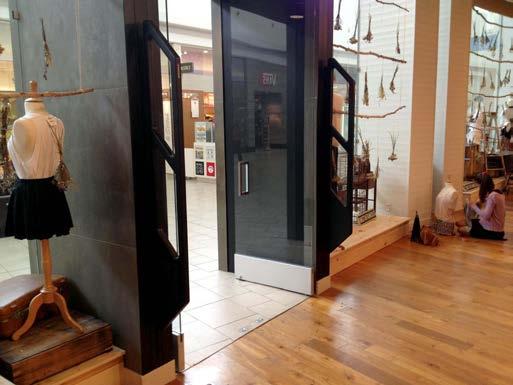
SOLUTIONS SHOWCASE LP SOFTWARE
Incident and Case Management Secrets to Success
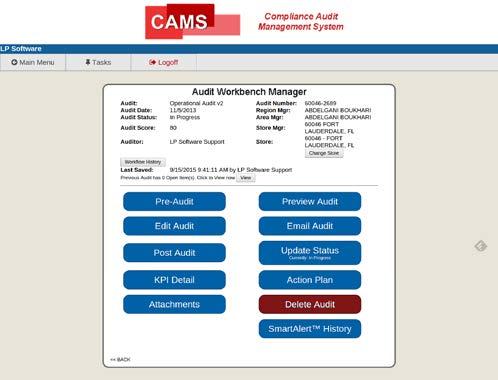

By Brian Eskra
The team at LP Software is once again changing the game in the retail loss prevention arena. LP Software has been providing incident/case management (LPMS), compliance auditing (CAMS), and recently, service request (SRMS) management software to retailers around the world since 1999. It’s not surprising that LP Software holds the largest market share when it comes to incident and case management software solutions. The time-tested solutions are used by both small and large companies in the world.
What started out as a simple incident management system to track theft issues has grown into a centralized repository to track theft incidents, HR incidents, investigations, accidents, OSHA, customer service issues, hotline anonymous reporting, awards, inventory results, and so much more. All this, coupled with our CAMS tool, to manage compliance audits for loss prevention, safety, HR, and numerous other departments is a big win.
The best part is it’s all backed by our world-class support. After all, what good is a pretty software tool without any end user support? LP Software’s combination of having a great product and the great service to back it up is what separates them from the crowd. Service and support is what makes the company stand out among the rest.
Success Secrets
As a decision maker for your incident management tool, the company you select is typically the most important decision you can make. With LP Software’s long track record of providing great customer service, support, and innovative products, you can’t go wrong. In addition to that, the product is undergoing a huge makeover. We are putting the tools in the hands of our clients to enhance their incident management experience. For example, our new screen builder tool will allow end users to build their own forms. Imagine building your own forms that can be used across multiple case types, specific to your business needs. Additionally, we are also placing an increased focus on mobile as well.
LP Software is the leading provider for incident management and compliance auditing solutions. The solutions provide the industry’s most powerful and adaptive tools on the market today.
More than Incident and Case Management
Tracking incidents and cases in a computerized system is great. However, with the LP Software tools, clients can do so much more. Why not manage your company’s hotline program via our anonymous entry forms?
Our system can transmit incident data to third-party companies. We integrate with insurance companies (TPAs), civil collection vendors, shoplifting alternative programs, exception reporting systems, HR systems, and many more.
About the Author
Brian Eskra is the president and co-founder of LP Software, Inc. Eskra’s background in loss prevention and technology has guided LP Software to its sixteen years of success by providing the industry with innovative software and incredible customer service.
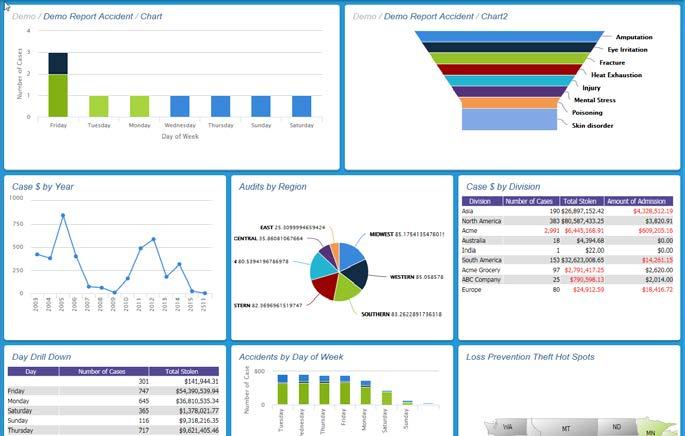
SOLUTIONS SHOWCASE SECURITIME
Increasing Control and Transparency for Businesses Truly Concerned with Security Performance and Billing Accuracy
Imagine trying to drive your car without a speedometer, an odometer, or a gas gauge. How would you know how fast you’re driving, how much gas you have left in the tank, or when that next oil change is due?
Just as you depend on the gauges in your car to drive safely and to alert you when there’s a problem, the same principle applies to your guard program. What gets measured gets managed. For too long, the loss prevention industry has been using guard services without access to measurable performance data.
So when one of the world’s largest retailers started asking why it couldn’t expect the same sophistication, analytics, reporting, and transparency in its security operations that it demands in other parts of its business, it raised some eyebrows industry-wide by taking a dramatically different approach that ultimately improved its bottom line. It wanted a modern security program, and Securitime stepped up with the only right answer—a well-tested, third-party software system that improved transparency, reduced risk, streamlined workforce performance, and ultimately cut operating costs.
Founding Securitime
Securitime is a new Software as a Service (SaaS) provider in the LP industry, but is built on a proven and prestigious history. The solution was crafted over nearly ten years of high-performance, on-the-job testing as the internal proprietary software for a well-known market leader in the security industry. Securitime is now independently available for forward-thinking firms who want to raise their loss prevention standards.
Securitime SaaS excels in three unique areas: Actionable real-time communication between the security workforce and your corporate loss prevention and site management teams, Increased program-wide accountability with clear benchmarking, and Real-time analytics.
The lack of technology that promoted this accountability caused one of the largest retailers, who wanted a modern, third-party, time-and-attendance service, to seek out the creators of Securitime for its pilot program. Based on the overwhelming success of that implementation effort, this retailer has completed the Securitime rollout to sites across North America and is reaping the benefits and notes a significant ROI—much more than the cost of the overall program.
Time and Attendance: Saving Money While Reducing Costs
Many security guards still use paper timecards, which have finally started disappearing. This has helped to improve billing accuracy, but when vendors control the time-and-attendance software, verifying accuracy and authenticity is a difficult task.
An independent, third-party software solution prioritizes the client’s interest and holds all parties to the same standards of effective communication and workforce accountability. Overbilling issues can be quickly identified and addressed without burdensome audit systems. Securitime helps identify ongoing tardiness issues, coverage gaps, and other accountability and business vulnerabilities in order to remove systemic risk from client operations—and Securitime can easily handle these tasks at scale.
Incident Reporting: Reducing Liability with Actionable Data
Communication is a challenge for all large security programs. Securitime was built from the ground up to provide a centralized communication hub that seamlessly collects, disseminates, and archives data for actionable future application. Each officer represents a collectable data point for your company’s long-term profitability. Their observations provide valuable information for those in loss prevention and asset protection leadership roles, but only if you can collect their insights in a way that can be mined on-demand and in a meaningful way.
Implementation
While the benefits of Securitime are readily apparent, all large-scale system rollouts require proactive change management. Vendor partners and security guards often push back against change, especially when that change doesn’t appear to be in their favor. In the pilot program cited above, established security vendors were quick to point out that they had time-and-attendance software and didn’t understand the need for an independent or client-run system like Securitime. However,
SOLUTIONS SHOWCASE SECURITIME

after deployment, Securitime revealed long-hidden timekeeping problems that made the debate futile for all parties.
Securitime’s location-based verification system uses caller ID validation, which quickly revealed notable “irregularities.” Officers who had previously clocked-in by cell phone were now unable to do so with Securitime. Site supervisors were alerted to the distressing truth—they had been paying guards who were not actually on site, and worse, their facilities had systemic coverage lapses that exposed both their inventory and staff to avoidable risk.
Securitime’s communication processes also force engagement between the client and the vendor both at the local and national levels. Guard performance and invoicing conversations could be addressed and resolved quickly with clear, well-documented, and easily accessible supporting data, which resulted in an instant increase in program performance. When both the client and the vendor have access to the same accurate time-and-attendance information, issues can be resolved quickly, and long-term trusted partnerships can flourish.
Unexpected Benefits
Apart from the anticipated value of Securitime, there were a number of unexpected benefits realized by the security management provider: Good performance was noticed. Security vendors could now be ranked on verifiable data, and great performance could be recognized and rewarded. Administrative costs went down. Securitime’s validations, alerts, and billing systems decreased administrative overhead, reduced vendor costs opening up greater margin, and increased negotiation capacity in competitive bids. Client communication improved. By allowing incidents to be addressed quickly, vendors could more accurately evaluate and improve their staff, increase client trust, and proactively plan for long-term growth.
In addition, there was a number of unexpected big wins for the client: Previously, schedule change policies had been ignored at the regional and store levels. These discrepancies created budget challenges at the end of year. Once the schedules fell into alignment, unauthorized attempts to make schedule changes could be quickly identified and dealt with appropriately. Securitime’s incident-reporting services proved to be valuable strategic data points. Security officers are great eyes and ears in the field, but if the information is not reaching key personnel in a timely manner, it loses its value, and officers begin to disengage.
Securitime’s ability to disseminate incident information quickly through automated, severity-based channels gives clients quick, actionable information.
Real, Measurable ROI Delivered
After a full two-year deployment, the client recognized an average 2 percent reduction in non-billable time reported in the weekly punch reports—a direct savings. An additional, non-direct savings from 1 to 3 percent are also consistently reported from greater schedule alignment, a near elimination of unauthorized schedule changes, reduced liability exposure, onsite validations to improve billing to performance actuals, reduced administrative burden, and clear, consistent key performance indicators (KPIs) to evaluate security team performance at the enterprise level.
If you are interested in a conversation to determine if Securitime could work for your organization as well, contact us at 866-254-1237 or visit our securitimewfx.com. We’d be glad to provide a fully confidential consultation.
SOLUTIONS SHOWCASE THE RETAIL EQUATION
How Strict Return Rules Can Decrease Retail Revenue
By David Speights, PhD, Daniel Downs, PhD, and Adi Raz, MBA
Merchandise return transactions are a critical part of the customer experience of retail. The objective is an optimal return rate, where the retailer finds the right balance between too many returns that may lead to fraud and abuse, and too few returns that may lead to customer unhappiness. But how does one arrive at such a measure?
A major retailer recently asked the same question. As a customer of The Retail Equation (TRE), the retailer asked for help in understanding the impact return policies have on business. The retailer, who was experiencing declining sales, needed to pinpoint areas where it might improve, and one of the areas to be evaluated was the return counter.
With return authorization solutions deployed in more than 34,000 retail locations, TRE evaluates an unprecedented amount of return data and, in turn, is able to provide its customers with powerful insights to help them understand and improve their business. Therefore, TRE set forth on a benchmark study to examine the impact different return policies could have on net sales and return rate.
The Methodology
Stores were divided into three groups. The first group, which made up approximately one-fourth of the customer’s stores, was placed into a “strict return rules” test group, designated as the “Strict Group.”
The second store group of similar size began testing The Retail Equation’s Verify return authorization solution—a “friendlier return experience”—at the same time as the first group underwent its strict return rules policy. This second group was designated the “Friendly Group.”
The third or control group operated as usual and was designated as the “Balance of Chain Group” or “BOC Group.”
The Strict Group and the Friendly Group were the most easily compared since they rolled out their new return procedures at the same time. And the results speak for themselves.
Over the course of the test, which ran for six months, the Strict Group showed an 11.2 percent decrease in net sales, while the BOC stores showed a 6.4 percent decrease in net sales. And the Friendly Group showed only a 2.6 percent decrease in net sales—this is an 8.6 percent improvement over the Strict Group.
Taking a closer look, the customer evaluated the net sales trend by store group, comparing the time in the months leading up to the deployment date with the months following. During that time, the Friendly Group showed a minimal change. The net sales decrease leading up to the deployment date was 0.1 percent, while after the deploy date it was 0.2 percent. However, the net sales decrease in the stores where a strict policy was implemented had a 0.6 percent net sales decrease leading up to the change, while a whopping 2.1
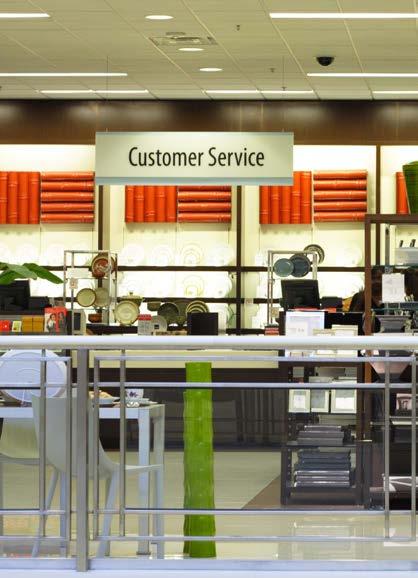
Net Sales Trend (Strict Stores Only)
Signi cant Decline Following Strict Return Rules Deployment
Revenue
SRR Deployment Date
Months
SOLUTIONS SHOWCASE THE RETAIL EQUATION
Group

Strict stores
Friendly stores
Control stores
Return Rate Comparison
Prior Year Current Year
7.8% 7.2%
6.4% 7.3% 5.9% 7.4% % Change
-7.7% -7.8% 2.0%
percent decrease in the months after they adopted the strict return rules policy.
TRE dug deeper to determine whether these trends differed based on region, and the decline in the Strict Group was universal and widespread across all tested regions.
Return Rate Impact
TRE also evaluated the impact of stricter return policies versus friendlier return policies on return rate. Based on the findings, the Friendly Group and Strict Group both had better return rate reductions than the Balance of Chain Group. The Friendly Group exhibited return-rate reductions due to TRE’s targeted predictive-modeling approach that only impacts a small portion of all returns—typically less than 2 percent. The Strict Group exhibited return-rate reductions using more punitive rules and policies, for example, by declining all non-receipted returns and directly impacting the overall consumer experience of every shopper.
Strict Return Rules Negatively Affect Stores and Consumers
At the end of the six-month test period, the Strict Group of stores showed an 8.6 percent reduction in net sales compared to sales from the Friendly Group. Stated a different way, if sales declined in the entire chain by 8.6 percent and the overall return rate was 7.2 percent, the retailer would have to reduce their total return dollars by approximately 118 percent to offset the loss in revenue—which is impossible because the total dollars of lost sales would have already exceeded the total return dollars for the retailer.
This shows a real revenue impact and telling statistics for the retailer, plus a key learning point for other retailers. There were several other important conclusions drawn from the study: Stricter return rules and policies negatively impact all shoppers, even those who never make a return, because return policies are typically a consideration on every purchase. Stricter return rules and policies significantly harm net sales. As mentioned above, the Strict Group of stores showed almost a 9 percent reduction in net sales as compared to the Friendly Group. Depending on chain size, the unintended consequence of stricter return rules and policies can cause a revenue decline of hundreds of millions or even billions of dollars. Stricter return rules and policies do not lead to any better return-rate reductions when compared to The Retail Equation’s
Verify solution.
About the Authors
David Speights, PhD, is the chief data scientist; Daniel Downs, PhD, is a statistical criminologist; and Adi Raz, MBA, is director of modeling and analytics for The Retail Equation.
About The Retail Equation
Headquartered in Irvine, California, The Retail Equation optimizes retailers’ revenue and margin by shaping behavior in every customer transaction. The company’s solutions use predictive analytics to turn each individual shopper visit into a more profitable experience. This yields immediate financial payback, increasing store comps by as much as 2 percent, with significant return on investment.
Their Software-as-a-Service applications operate in more than 34,000 stores in North America, supporting a diverse retail base of specialty apparel, footwear, hard goods, department, big box, auto parts, and more. For more information, visit TheRetailEquation.com.
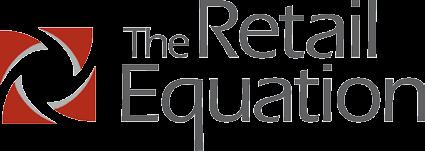
SOLUTIONS SHOWCASE SECURITY RESOURCES
Love the Technology…Don’t Forget the People
By Joseph Malone
Technology is everywhere. From emails to smart phones to social media and everything wireless, we have become a society fixated on the newest and best technology.
Think you’re immune? Have you ever left your home or office without your smartphone and immediately returned to pick it up? Most people would say, “Yes.” Could you get through an entire evening without checking your work emails on your smartphone or tablet? Most people would say, “No.”
Many people would be surprised to discover that the technological advancements of recent decades are quite similar to the effects of the Industrial Revolution in the eighteenth century. Both movements accelerated the displacement of workers by machines that could perform tasks faster and more accurately.
However, there is a major difference. In earlier generations you could leave the office at five o’clock and not have to think about work again until the next morning. You weren’t expected to take phone calls or respond to requests if you were sick or on vacation. Today, thanks to email and smartphones, the length of the average workday along with your accessibility has dramatically increased.
Connecting vs. Communicating
While there’s no question that technology has radically altered the manner in which companies are doing business, the price of this progress is not without its downside. Sadly, as businesses are expanding, they are becoming more and more dependent upon technological and automated services, throwing the human side of customer service out the window.
It’s as if corporate America has developed a severe case of amnesia, forgetting that our clients butter our bread. We inappropriately thank them by automating our services instead of providing the indispensable human element that is so necessary for building and maintaining strong business relationships.
However, some companies are quickly catching on. According to New York job placement expert Carla Gigante, owner of The Gigante Agency, “An overwhelming majority of companies say ‘soft skills’ and the ‘human touch’ in customer service are just as important and in many cases more important than technical skills. Many are actually hiring people skills over
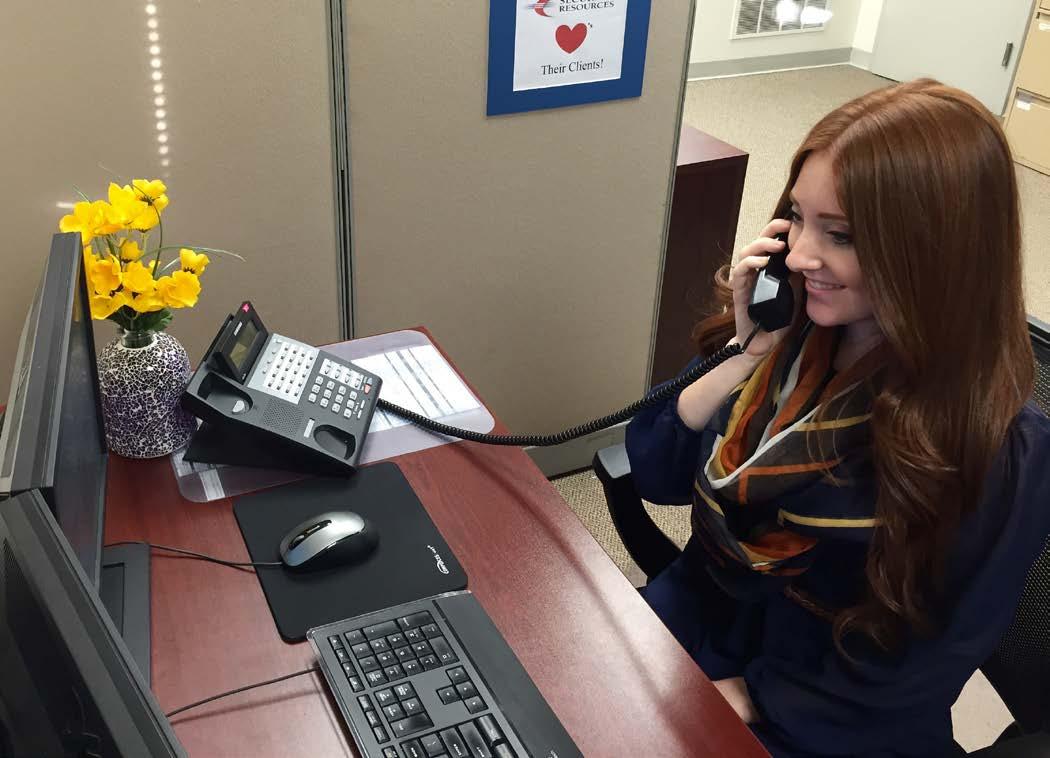
SOLUTIONS SHOWCASE SECURITY RESOURCES
technical skills. Why? People skills are a talent that is more inborn than learned. Therefore, it’s much more difficult to train.”
Technology is a powerful tool for generating massive amounts of information, yet without trained people who know how to utilize and communicate that data effectively, the value is significantly reduced if not completely worthless.
Technology has enabled users to interact with clients and coworkers on the other side of the globe. However, it has also diminished some of the trust and rapport that previously evolved from face-to-face meetings and phone conversations. Perhaps you’ve observed this in your own office space. Workers are more often inclined to chat electronically rather than physically walking over to the next cubicle and speaking with someone.
The issue is that we’re spending too much time maintaining superficial online connections without dedicating enough time or effort for cultivating real-life business and personal relationships. Did you ever think we’d live in an age where people could window shop for their soulmates utilizing online dating services? This technology allows people to make snap judgments and decisions based exclusively upon a picture and a profile.
While we may have hundreds of LinkedIn connections, many are people we would have never met otherwise. Although we can share many new concepts or ideas with these contacts, do they really provide the kind of human interaction that is so essential for our business growth or emotional health?
If we are constantly checking in with our “virtual worlds,” little time is left for our “real-world” relationships. Too much chatter… too little real conversation. There is a huge difference between connecting and communicating.
Technology to Enhance Client Services
Now, before you think that we don’t appreciate the technological revolution, let me state that we wholeheartedly embrace it. We value the objectives it has allowed our company to achieve and the growth it has helped us realize in the last twenty years.
In fact, we are in the process of launching the first part of our new enterprise platform. This is our largest technological effort to date, and it will include our new client portal and mobile application. Throughout each step of its development, we have asked the question—how will this affect our clients, partner companies, and employees? In having these discussions, we’ve acknowledged that efficiency in the process can’t replace steadfast person-to-person interaction.
All of us at Security Resources want to assure our clients that no matter how much technology we have, we will never lose sight of the fact that we are in the “people business.” You will always be able to reach our live, accountable personnel—day or night. Everything we are developing has been designed with the goal of providing outstanding client service with an emphasis on providing the essential human touch.
We are also determined to drive our client-centric model throughout every level of our company. To illustrate our commitment, we have recently added a corporate client services trainer as a core member of our client satisfaction team. In addition to all our regular, ongoing job training, everyone from field supervisors to the CEO level is participating in weekly client services training. Our topics range from writing professional emails and telephone etiquette to developing assertive and effective communication skills.
Moving from Good to Great
We are on a mission to take everything that is good about Security Resources and make it great by providing outstanding client services. To guarantee we get there, we have created a Client Relations Department, and our client relations director now serves as part of the executive management team. Together, we are responsible for all aspects of our client satisfaction and quality assurance.
Our ultimate goal is to provide expectation-shattering service in every client interaction. We know we can only achieve this objective by keeping our focus on the human element. After all, it’s the people that actually get things done.
Security Resources is in the people business, providing security guard services for our clients. We recognize that our clients, partner companies, and suppliers are people too. We don’t just do business with XYZ Company; we do business with Maria, Tom, or Ed working at XYZ Company.
We appreciate that change and technology are here to stay, and our company is excited about it. However, technology will never replace our commitment to serve our clients with the highest levels of personalized integrity that they so rightly deserve.
Love the technology…don’t forget the people.
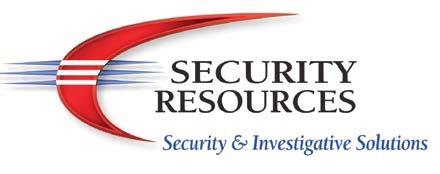
About the Author
Joseph Malone is Chief Executive Officer for Security Resources, a national security firm providing security guard and investigative services based in Cherry Hill, New Jersey.
Is Your Team Focusing on the Right Things? on the Right Things?

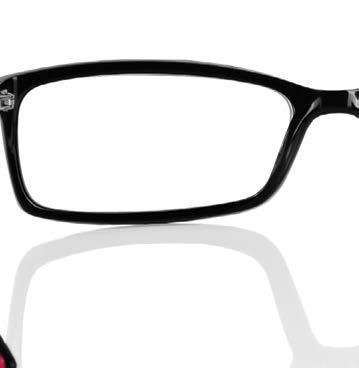








Make sure employees see your message clearly. Effective communication, consistent messaging, and measured results are in sight with Contact.








